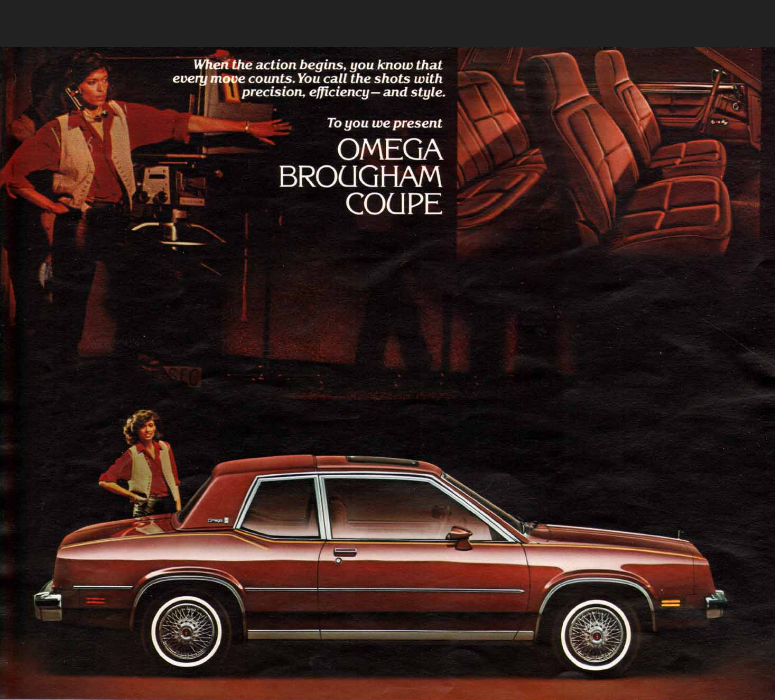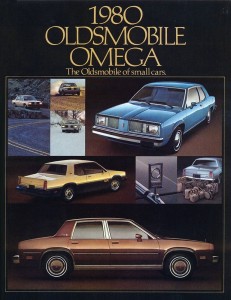“When the action begins, you know that every move counts.”
What are you really angling at, Oldsmobile? Huh?
This is an 1981 ad for the lowly Oldsmobile Omega, sister car to the Pontiac Phoenix and Chevrolet Citation, and proud recipient of GM’s X-Body platform.
Or should I say, XXX-Body platform…
Okay, I get it – she’s a director or something. The vest should be a dead giveaway. You can put pens and stuff in those pockets.
Still, hats off to Oldsmobile for trying to add some sly sexiness to the unlamented Omega, seen here in Broughamified form.
Though the name was applied to a Nova-based sedan starting in 1973, the downsized 1980 Omega (and its sister cars) were “a big, f***ing deal,” to quote Joe Biden.
Front-wheel-drive, with a standard four-cylinder engine and optional V6, they rocketed to the top of must-buy lists against a backdrop of high gas prices and a relatively dismal economy.
‘Omega’ is the last letter in the Greek alphabet, and translates into ‘mega’ or ‘great’. Well, owners of the 1980-1984 Omega soon found themselves at the forefront of a great number of recalls.
The GM X-Body cars, like Chrysler’s Dodge-Aspen/Plymouth Volare twins four years earlier, could have benefited from more extensive pre-production quality testing. Besides a myriad of problems, buyers of the base X-Bodies were likely underwhelmed by the performance of the Iron Duke 2.5-litre four-cylinder.
Making roughly 90 horsepower, the iron block, iron head, overhead valve engine sounded powerful, but was based on ancient architecture. The optional 2.8-litre, aluminum head V6 was a far better bet, making 135 horsepower and good amounts of torque.
My earliest road trip memory, going back to 1986, featured the whole family climbing New Hampshire’s 6,288-foot Mount Washington in a V6-powered 1980 Pontiac Phoenix. That engine eventually evolved into the 3.1-litre, and was only retired in 2005.
Unlike the Phoenix and Citation, the Omega shunned the hatchback body style that seemed to be the most popular choice for Chevy and Pontiac buyers.
This was an Oldsmobile, after all – a mid-range marque – and hatchback cars were for entry-level buyers. Coupe and sedan only, please.
The vinyl landau roof, whitewalls and wire-spoke hubcaps gave this top-end Omega the exterior trappings of larger Oldsmobiles, but those can only bring so much panache to a maligned crop of cars. Still, it brought some satisfaction to this vest-wearing director, who is definitely going places in her career.



